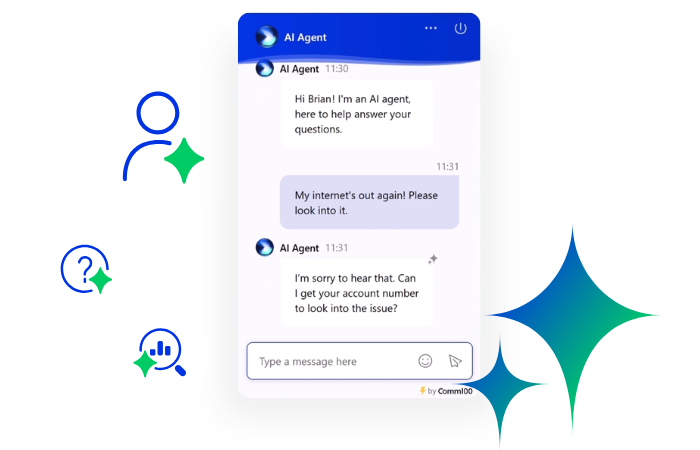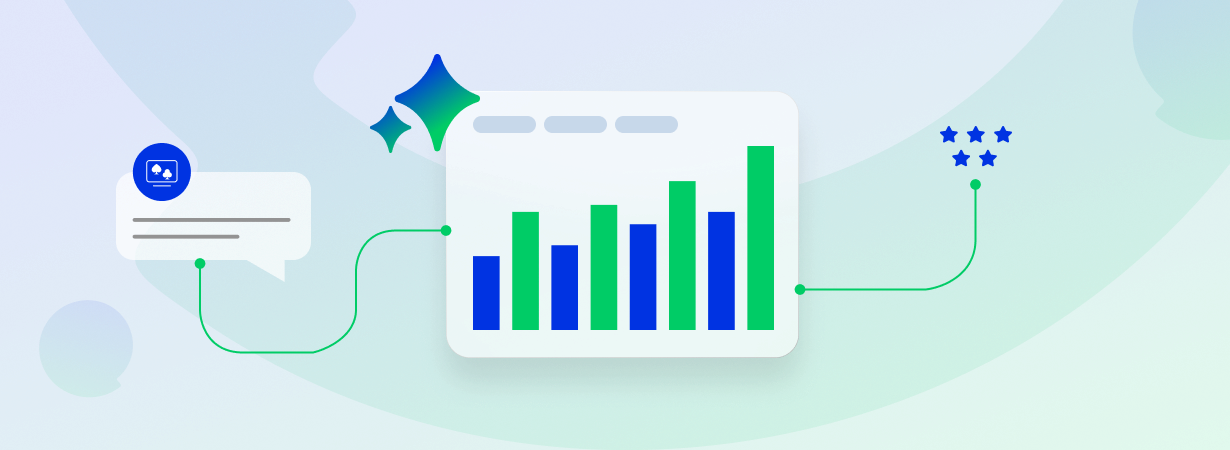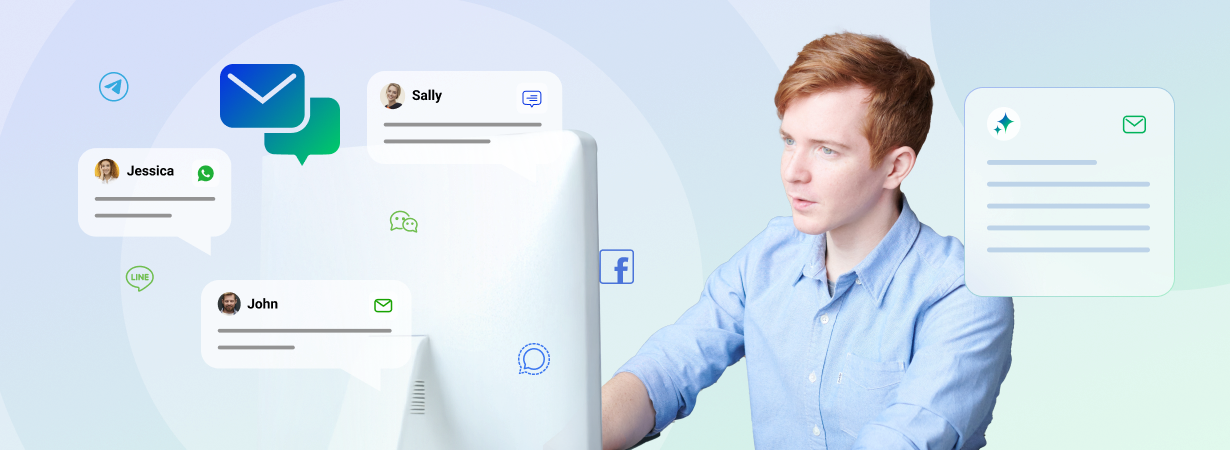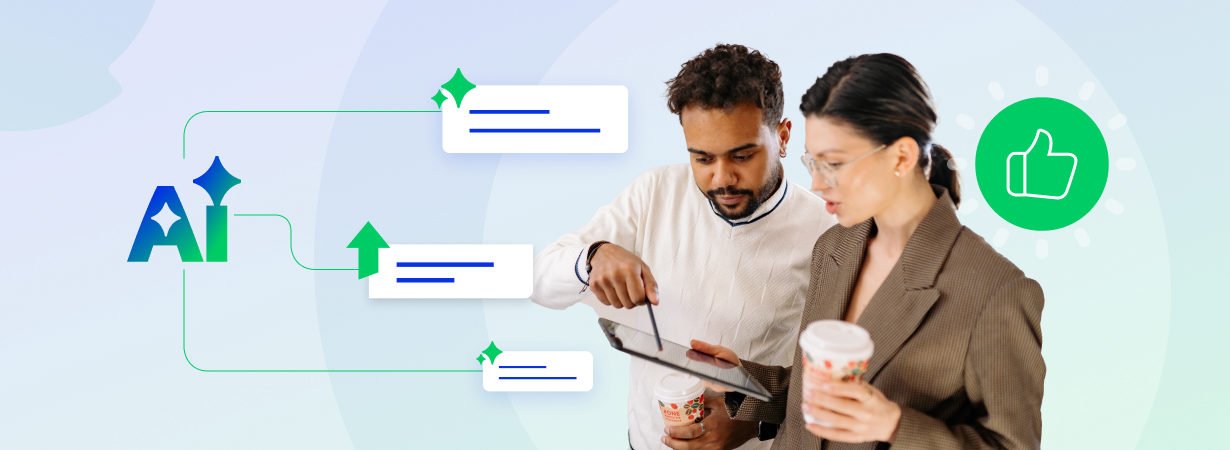Is your customer churn rate burning a hole in your retention plan? If so, you’re not alone. When it comes down to it, most companies are losing far too many customers. According to this article by Frederick F. Reichheld in the Harvard Business Review, the average company loses about half its customers in a fiver-year period.
Half. Can you imagine how much revenue you lose when 50% of your customers walk out the door?
Understanding your churn rate is crucial to keeping customer retention high. But with all of the different definitions of what a churn rate is, how to derive it, and what to do with the information once you have it, it can be hard to know where to begin.
That’s why in this post we’re tackling churn confusion head on. Whether you’re unclear on what a churn rate is, or if you’re looking for ways to decrease yours, we’ll spell out the fastest way to identify and lower your churn rate immediately.
What Is Customer Churn?
Customer churn (also known as customer attrition, turnover, or defection) is when a customer decides to stop engagement with your company.
In simpler terms: it’s when you lose a customer.
If the definition above sounds vague, it is. Customer churn has to be defined by each team. You need to decide what churn is for your business, and how it fits into your overall retention plan. For example, for one company churn may be defined as the moment when the customer has terminated his/her monthly subscription. For another, it may be when a customer has not made a purchase in over six months.
What’s important here is not what you define as the exact moment of churn, but that this definition is based off of information that clearly demonstrates that the customer in question isn’t likely to return for more business. Work with your analysts to identify indicators of customer churn; whether it’s an outright cancellation or a subtler metric, it should be defined by carefully analyzed customer data.
How to Calculate Your Customer Churn Rate
Your company’s churn rate is the measurement of your customer attrition over a chosen period of time. Just like with the definition of churn, calculating your customer churn rate is going to be dependent upon your organization’s specific processes and needs.
Your churn rate can be calculated by how many customers you lose over the day, month, quarter, year, etc. What you are ultimately doing is comparing the number of customers at the beginning of the chosen time period to the end. The most basic way to calculate your churn rate percentage is:
(Number of customers to start – Number of customers left)/Number of customers to start * 100%
With the above formula, what you get is the percentage of customers who have left the company over that pre-determined period of time. It’s a relatively straightforward way to determine your company’s churn.
Additionally, there can be instances in which the simplicity of the above formula can create unreliable metrics from month to month. In this Recurly blog post, Devin Brady points out how from one month to the next similar variables can produce significantly different churn rates (due to differences in the starting customer base), which can ultimately be misleading.
If you find that your company is in a stage of rapid growth, try using these formulas by Steven Noble at Shopify. They take into account a number of tricky variables, such as customer acquisition and varying periods of churn time (for example, a month versus a quarter).
Powerful live chat software
Offer real-time, personalized, efficient support that your customers and agents will love at 1/3 the cost of voice support.
Learn more
Comm100 Live Chat
How to Lower Your Churn Rate
No matter how low your churn rate is, there is always something you could be doing to save potential long-term customers from the throes of dissatisfaction. While you are figuring out a long-term solution to reduce churn and increase retention, use one of the following methods as a quick fix for the upcoming weeks and months.
1. Offer Discounts and Special Deals
If you want a real short-term solution to your churn rate, offer returning and current customers a discount or special deal. This can help you retain customers while you plan a more consistent long-term churn prevention strategy.To get started, offer deals on new or special items to returning customers. This can show customers who are on the fence how you treat your loyal customers, which may even influence their long-term purchasing behavior.
2. Identify At-Risk Customers
You can’t really reduce churn without knowing what the signs look like for your company. Have your customers switched to a more basic subscription? Do they interact with the product less? Did they suspend their account?
According to Michael Lowenstein, co-author of the book Customer Winback: How to Recapture Lost Customers And Keep Them Loyal: “The sooner intervention begins with an at-risk customer, the easier and less expensive it is to fix the problem; so, it is clear that the best plan is to have a system for identifying these customers.” Catch customers before they leave by creating a system that identifies what at-risk means in your business.
According to Lowenstein, the following may be indicators of an at-risk customer:
- Account event milestones—For example, membership renewal dates are account milestones that double as opportunities for customers to question their engagement with your company and potentially leave.
- Purchase and use data—If you notice a decline in purchase and use activity, your customer may be thinking of saying goodbye.
- Accounts receivable—Slow or delayed payment from a customer may indicate an impending churn.
You can read more of Lowenstein’s signs for at-risk customers over in this helpful blog post.
3. Create a Predictive Churn Model
What are the triggers that cause customers to leave your company? Using the information above in addition to detailed customer data, you can create a tool that will help you anticipate exactly when customers are at risk. This detailed series of posts by New North will show you step-by-step how to create your own predictive churn model.
4. Create Customer Satisfaction Surveys
Just like you ask employees about their experience with your company in exit interviews, you should ask leaving customers about what it was that prompted them to move on. This can help you address issues in support, product development, or general service that can prevent churn. For ideas on what to ask, check out our blog post: 31 Questions to Help You Craft the Perfect Customer Satisfaction Survey.
5. Use a Proactive Approach
Sometimes customers suffer in silence. Whether they can’t navigate a page or find a specific product detail, there will always be customers who would rather leave your site than get the information needed to make their purchase.
When trying to reduce your churn rate in a pinch, try upping your proactive reach. After you identify at-risk customer behavior, you can proactively contact them through phone, email, and live chat, offering additional assistance that may prevent them from giving up in frustration. Just be sure to always use quality proactive messages that speak to the customers you’re targeting.
6. Increase Customer Engagement
Oftentimes customers leave because they have stopped engaging with your product or service. This means that customers are not getting the most value out of their relationship with you, and are likely to reach a point in the near future where they choose to say goodbye.
With an increased focus on Relationship Marketing (which places a focus on satisfaction and retention), you can help customers get more out of their engagement with your products, ultimately leading to a long-term relationship.
If you notice that engagement with your service is dropping, consider implementing specific programs and initiatives that can help customers understand and utilize all the benefits of your product/service. For example, you can have an expert agent deliver an in-depth product webinar or Q&A for your customers with low engagement. You can also increase the usefulness of articles on your blog or newsletter, and offer one-on-one consultations for struggling customers.
Conclusion
Great customer retention is dependent upon a low churn rate—while this generally means a great product and quality service, there is a lot agents can do in the short-term in order to enhance the customer experience and lower churn.
Have you used any of the recommendations above? What are your tactics for dealing with customer churn?
Download now: The Guide to Becoming a Top Performing Live Chat Agent
Effectiveness, efficiency and professionalism are the core skills of an excellent agent. This eBook discusses all the essential tips for live chat agents to communicating effectively, addressing customer issues efficiently, and representing your brand or company in a professional manner.
Download Now
eBook








